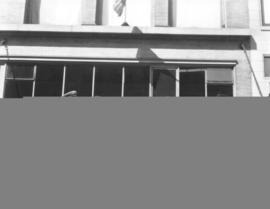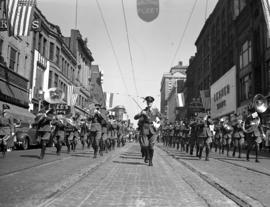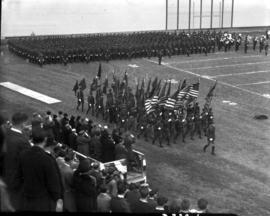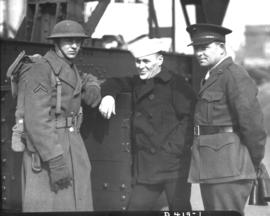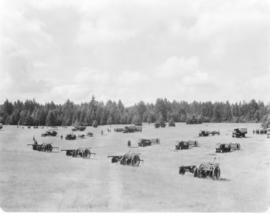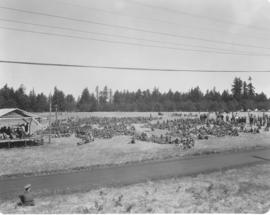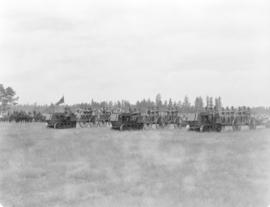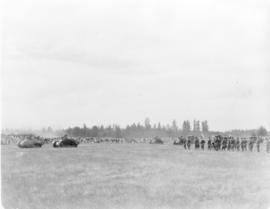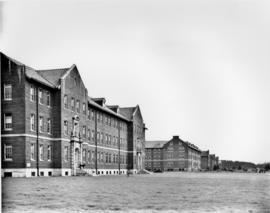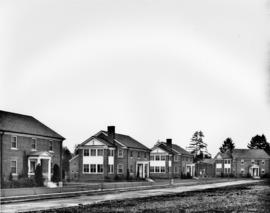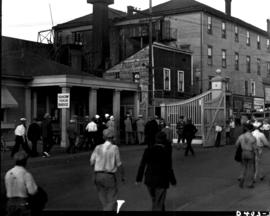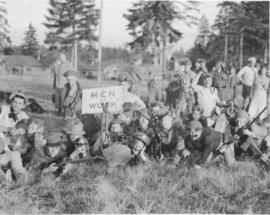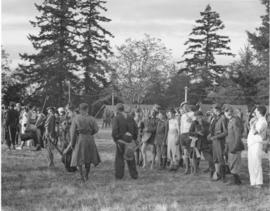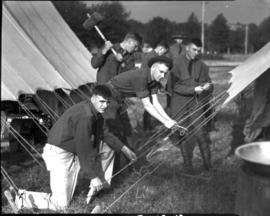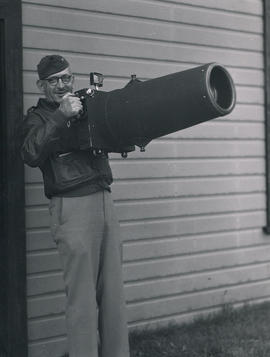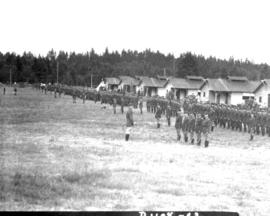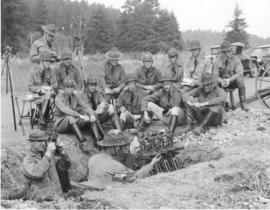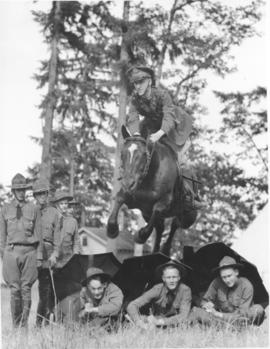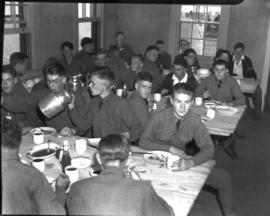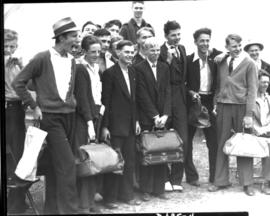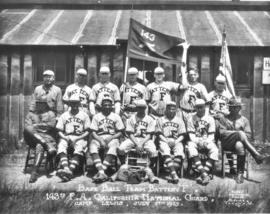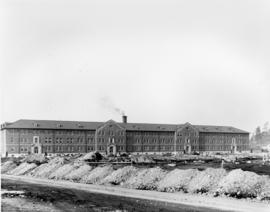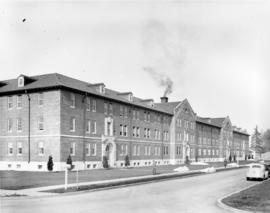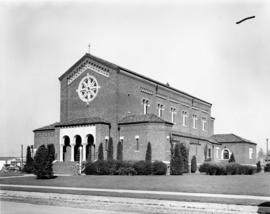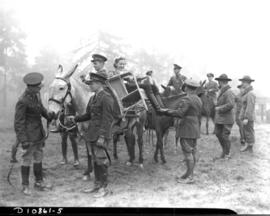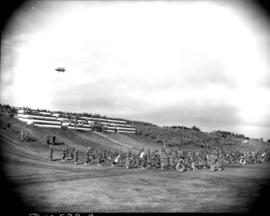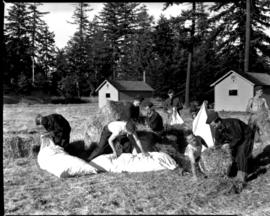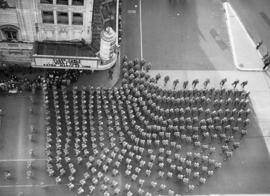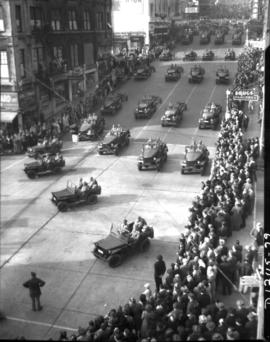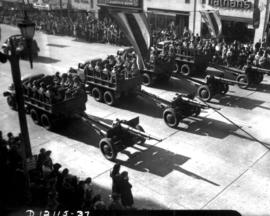Thousands of spectators lined Broadway when over 4,000 soldiers, sailors and marines staged a military parade on Saturday July 24, 1937 as part of the annual Fleet Week program in Tacoma. Some 2,000 soldiers from Ft. Lewis joined 2,200 enlisted men and officers from the six battleships resting at anchor in Commencement Bay. Also taking part in the parade were a battalion of marines from the U.S.S. Oklahoma, and the combined bands of the Oklahoma, the U.S.S. West Virginia and the 10th Field Artillery Band from Ft. Lewis. The parade started at South 15th and Pacific. Marching north, they took So. 9th up to Broadway, and then marched south to So. 17th Street. In this photograph of the parade, the marine band led by drum major Roy Van Antwerp, is between So. 9th and So. 11th on Broadway. (T.Times 7/24/1937, pg. 1)
Military parades & ceremonies--Tacoma--1930-1940; Van Antwerp, Roy; Drum majors--Tacoma--1930-1940; Military bands--United States;
